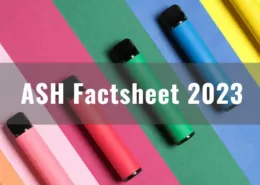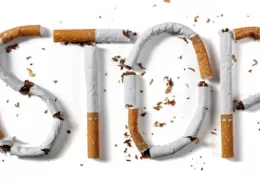Black Market Boom: Is Australian Tobacco & Vape Policy Backfiring?
Australia is grappling with a rapidly expanding illicit tobacco market, a crisis marked by stark price discrepancies, lost tax revenue, and escalating organized crime. While a legal pack of 20 cigarettes costs around AUD $40 due to massive tax hikes, black market alternatives flood the streets for as little as AUD $15. This underground economy isn’t just about cheap smokes; it’s increasingly linked to violent crime, including extortion rackets and arson attacks targeting retailers involved in the trade. This alarming situation raises critical questions: are Australia’s tobacco control policies inadvertently fueling the very problems they aim to solve?
The Root Causes: Sky-High Taxes and Restricted Alternatives
The connection between policy and the black market appears direct. Over recent years, Australian tobacco taxes have surged by an unprecedented 282%, making legal cigarettes among the most expensive globally. While intended to deter smoking, this extreme pricing strategy has created a powerful incentive for smokers, particularly those with limited incomes, to seek cheaper, unregulated sources. The vast price difference makes illicit tobacco highly attractive and profitable for criminal networks.
Compounding this issue is Australia’s uniquely restrictive approach to vaping, specifically nicotine e-cigarettes. While other countries like New Zealand and the UK have regulated vapes as potentially less harmful alternatives available through retail channels (contributing to faster declines in smoking rates there), Australia implemented a cumbersome prescription-only model. This policy severely limits access to legal, regulated vaping products, effectively removing a potentially safer and more affordable nicotine alternative for adult smokers struggling with the high cost of legal cigarettes. This lack of viable legal alternatives further pushes demand towards the unregulated black market for both illicit tobacco and illicit vaping products.
The Disproportionate Toll on Disadvantaged Australians
The consequences of these intertwined policy choices fall heaviest on the nation’s most vulnerable populations. Research highlights that low-income Australians not only have higher smoking rates but also tend to smoke more heavily than their wealthier counterparts. As legal cigarette prices soar, these individuals face intense financial pressure. A University of Queensland study led by Professor Coral Gartner found that while overall tobacco purchasing has decreased, households still buying tobacco (often lower-income) spend nearly AUD $5,000 annually, frequently sacrificing essentials like food and healthcare.
This financial strain exacerbates existing health inequities. Smoking-related illnesses are a major contributor to the life expectancy gap between Australia’s richest and poorest citizens, with higher rates of conditions like lung cancer concentrated in disadvantaged areas, including Indigenous communities. While proponents of high taxes aim for cessation, the reality for many entrenched smokers in difficult circumstances is increased hardship and a forced reliance on the dangerous illicit market, rather than quitting altogether. Critics note that mainstream cessation strategies often overlook or dismiss the role harm reduction tools like vaping could play for this demographic.
The Prescription Vape Model: An Unworkable “Solution”
Australia’s attempt to control nicotine vaping via a prescription-only model, accessible primarily through pharmacies, has proven largely ineffective in practice. A recent survey of Australian pharmacies delivered damning results:
- Around 75% of pharmacies surveyed do not stock nicotine vaping products.
- Many pharmacists expressed significant reluctance due to administrative burdens, lack of training or interest, ethical concerns, and potential negative impacts on their professional reputation.
- The minority (26%) that did offer any vaping products had extremely limited selections, rendering the legal pathway inaccessible or impractical for most potential users.
This widespread non-participation by the designated gatekeepers means the prescription model fails to provide meaningful access to regulated vaping products for adult smokers seeking alternatives. It inadvertently strengthens the black market for both illicit tobacco and unregulated vapes, negating potential public health benefits while frustrating consumers and healthcare providers alike.
Rethinking the Approach: Harm Reduction and Regulation
The mounting evidence suggests Australia’s current twin strategies – exceptionally high tobacco taxes combined with highly restricted vape access – are creating perverse outcomes. They disproportionately punish poorer smokers, fail to meet smoking reduction targets, foster a dangerous criminal underworld, and block access to potentially less harmful alternatives used successfully elsewhere.
A growing chorus of public health experts, commentators, and consumer advocates argues for a fundamental policy reassessment grounded in harm reduction principles. Instead of prohibitionist approaches, they propose pragmatic regulation. A key suggestion involves allowing licensed specialist vape retailers to sell approved nicotine vaping products directly to adults. This would necessitate:
- Strict product safety and quality standards.
- Robust age verification systems for all sales channels.
- Appropriate controls on marketing and advertising.
This regulated retail model aims to provide adult smokers with a viable, safer, and legal alternative to both expensive legal cigarettes and dangerous illicit products, while implementing strong safeguards against youth uptake.
Conclusion: A Call for Evidence-Based, Compassionate Policy
Australia faces a critical juncture in its approach to tobacco control and nicotine use. The current reliance on punitive taxation and restrictive vape policies appears counterproductive, exacerbating inequalities and fueling a dangerous black market without effectively delivering on public health promises. A shift towards a more balanced, evidence-based, and compassionate strategy is urgently needed. Incorporating harm reduction principles, including regulated access to potentially safer nicotine alternatives like vaping products for adult smokers, alongside continued support for quitting conventional cigarettes, offers a more realistic path towards reducing smoking-related harm across all Australian communities.








